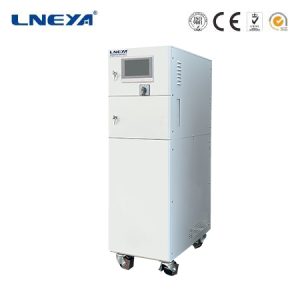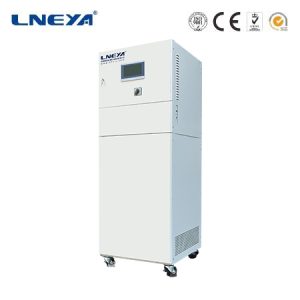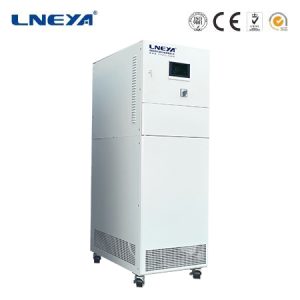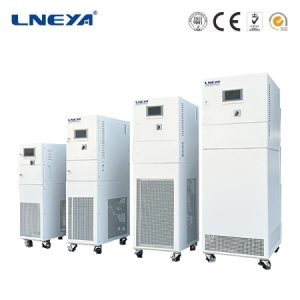Understanding 10kW Chillers: A Comprehensive Guide
Chillers are vital in maintaining comfortable temperatures in various environments, from commercial buildings to industrial processes. A 10kW chiller, in particular, is a significant player in this domain, offering a balance between efficiency and capacity. This article aims to provide a thorough understanding of 10kW chillers, covering their operation, types, efficiency, and applications, as well as the considerations for selection and maintenance.

Operation Principles of 10kW Chillers
Chillers work by transferring heat from an area that needs cooling to another area or fluid. A 10kW chiller has a cooling capacity of 10 kilowatts, which means it can remove 10,000 watts of heat from the environment. The basic operation involves a refrigeration cycle with a compressor, condenser, expansion valve, and evaporator. The refrigerant flows through these components, absorbing heat at the evaporator and releasing it at the condenser, thus cooling the desired space.
Types of 10kW Chillers
There are several types of 10kW chillers, each suited for different applications:
Air-Cooled Chillers: These are suitable for applications where water sources are limited. They use air to dissipate heat from the condenser.
Water-Cooled Chillers: Ideal for applications with ample water supply, these chillers use water to cool the condenser, often more efficient in warmer climates.
Screw Chillers: Known for their reliability and efficiency, screw chillers are used in large-scale applications.
Scroll Chillers: These are quieter and more energy-efficient than other types, making them suitable for noise-sensitive environments.
Centrifugal Chillers: High in efficiency and used for large cooling capacities, centrifugal chillers are common in industrial applications.

Efficiency of 10kW Chillers
The efficiency of a chiller is measured by its Energy Efficiency Ratio (EER), which is the ratio of the cooling capacity to the power input in watts per watt. A higher EER indicates a more efficient chiller. Modern 10kW chillers often have EERs ranging from 10 to 15, with some advanced models exceeding these values.
Applications of 10kW Chillers
10kW chillers find applications in various sectors:
Commercial Buildings: They maintain comfortable temperatures in offices, malls, and hotels.
Industrial Processes: Used in processes that require precise temperature control, such as food processing and pharmaceutical manufacturing.
Data Centers: Chillers are crucial in data centers to prevent overheating of servers and other IT equipment.
Medical Facilities: They ensure stable temperatures in laboratories, operating rooms, and storage areas for temperature-sensitive medical supplies.
Selecting a 10kW Chiller
When selecting a 10kW chiller, consider the following factors:
Cooling Capacity: Ensure the chiller’s capacity matches the cooling needs of the application.
EER: Choose a chiller with a high EER for energy efficiency.
Refrigerant Type: Opt for environmentally friendly refrigerants to reduce the environmental impact.

Maintenance: Consider the ease of maintenance and the availability of spare parts.
Budget: Balance the initial cost with the long-term operational costs and efficiency.
Maintenance of 10kW Chillers
Regular maintenance is crucial for the optimal performance and longevity of 10kW chillers. This includes:
Cleaning: Regularly clean the evaporator and condenser coils to maintain heat transfer efficiency.
Inspection: Periodically inspect the system for leaks, wear, and other issues.
Lubrication: Ensure all moving parts are well-lubricated to prevent friction and wear.
Filter Replacement: Replace air filters regularly to maintain airflow and efficiency.
Environmental Impact
The environmental impact of chillers is primarily through the use of refrigerants. Older chillers may use refrigerants with high global warming potential (GWP), contributing to climate change. Modern chillers use refrigerants with lower GWP, reducing their environmental footprint. It’s essential to choose chillers with eco-friendly refrigerants and consider their energy efficiency to minimize the carbon footprint.
In conclusion, 10kW chillers are versatile and efficient cooling solutions for a wide range of applications. Understanding their operation, types, efficiency, and maintenance requirements is crucial for selecting the right chiller for your needs. By choosing eco-friendly options and maintaining them properly, you can ensure optimal performance while minimizing the environmental impact.
 LNEYA
LNEYA
 简体中文
简体中文















































































